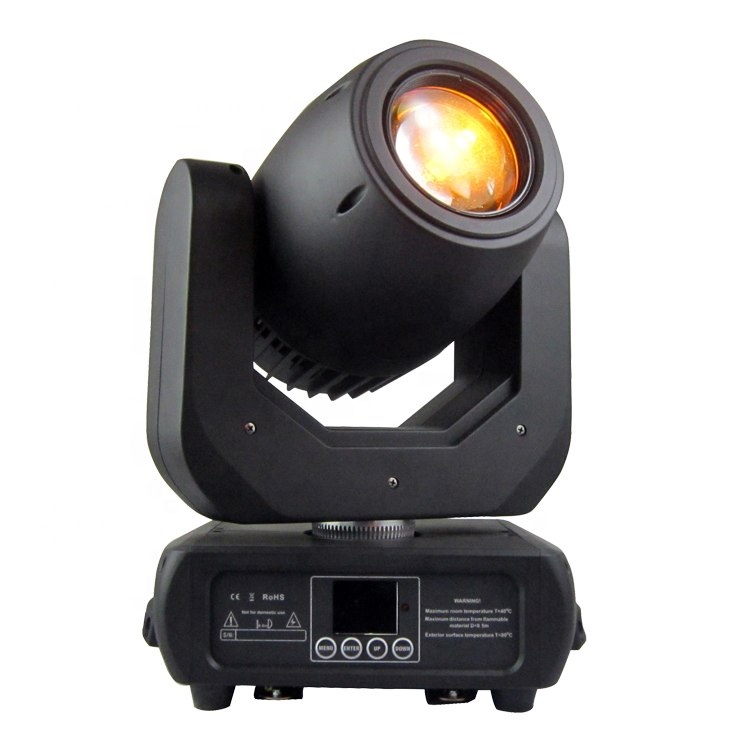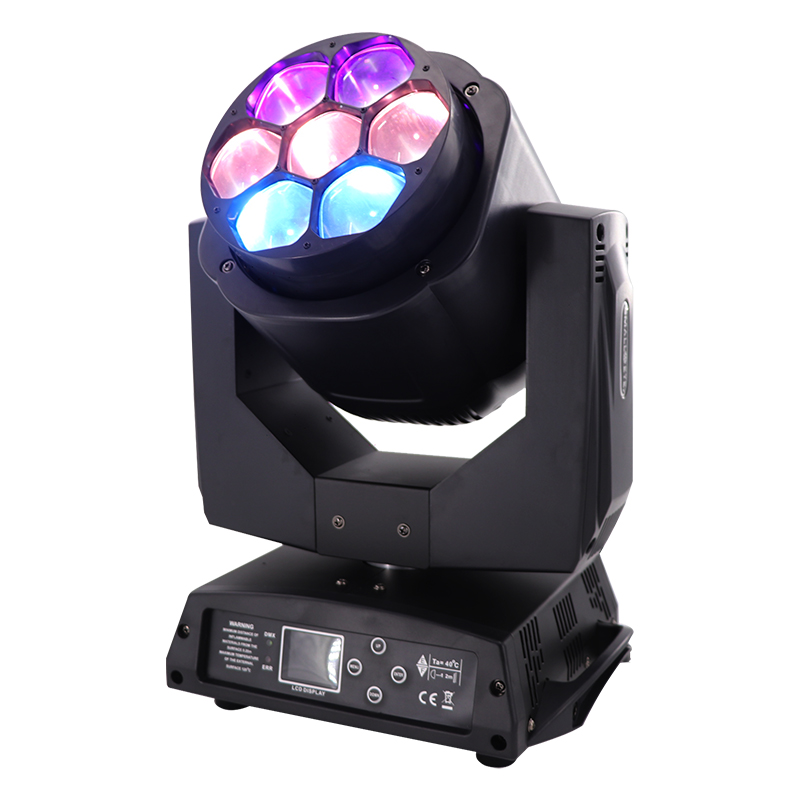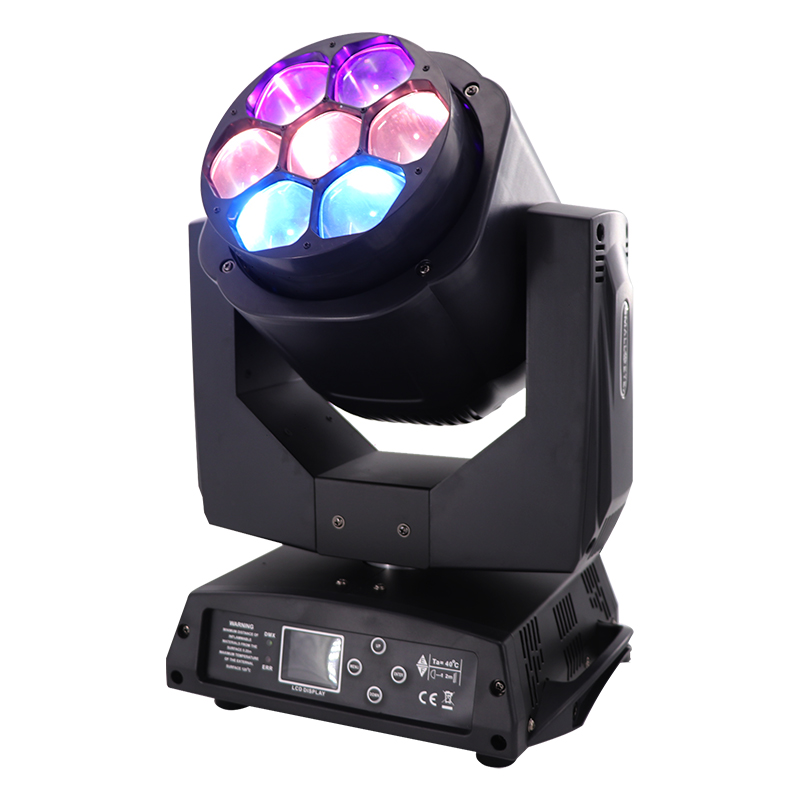Introduction: Lighting with Precision and Motion
In the ever-evolving world of professional stage lighting, moving head fixtures play a crucial role in shaping immersive visual environments. From sweeping beams in concerts to animated patterns in theaters, these lights deliver flexibility and intensity in a compact format. Two dominant mechanical structures dominate the market: yoke-based and base-mounted moving heads.
This article explores the fundamental differences between the two configurations and introduces high-performing examples—namely the L-58 150W Gobo Beam Spot and the Mini 7x15W BEE EYE Rotating LED—from StageLightGear.
I. Yoke-Based Moving Heads
1. Structural Overview
A yoke-based moving head uses a U-shaped arm to cradle and pivot the fixture body, enabling extensive pan and tilt movement. This design is commonly seen in beam, spot, and wash lights requiring wide-angle articulation.
2. Performance Advantages
Pan and Tilt Freedom: Smooth multi-directional sweeps
Stable and Balanced Rigging: Better weight distribution
Ideal for Large Venues: Stadiums, theaters, and outdoor shows
3. Featured Product: L-58 150W Gobo Beam Spot
The L-58 150W Gobo Beam Spot embodies all the core strengths of yoke-based design. It features a powerful 150W LED engine, crisp gobo projection, and vibrant color mixing.
Rotating gobos and static patterns for layered effects
Fast, responsive pan/tilt via precise yoke arms
Lightweight and compact for touring setups
Designed for club stages, weddings, and small concert venues
Used individually or in synchronized sequences, the L-58 150W Gobo Beam Spot offers both aesthetic elegance and technical versatility.

II. Base-Mounted Moving Heads
1. Structural Overview
Base-mounted designs house all motion mechanics in the base, while the fixture head remains directly connected above. This design minimizes space and is favored in smaller venues or ceiling-mounted grids.
2. Performance Advantages
Compact Format: Fits tight ceilings and truss zones
Lower Maintenance: Fewer mechanical linkages
Highly Dynamic Beam Play: Especially with strobe or zoom features
3. Featured Product: Mini 7x15W BEE EYE Rotating LED
The Mini 7x15W BEE EYE Rotating LED is a compact powerhouse with vivid RGBW color output and zoom functionality. Its lens rotation capability produces a unique “eye candy” effect that’s perfect for energetic shows.
Pixel-level control with 7x15W LEDs
Rotating lens group for immersive effects
Zoom and wash functionality in one unit
Ideal for mobile DJs, clubs, and rental kits
Despite its compact profile, the Mini 7x15W BEE EYE Rotating LED delivers sophisticated visual dynamics suitable for both centerpieces and accents.

III. Side-by-Side Comparison
| Feature | Yoke-Based (e.g., L-58 150W) | Base-Mounted (e.g., Mini 7x15W BEE EYE) |
|---|---|---|
| Structure | U-shaped arm rotation | Head atop integrated base |
| Motion Range | High (pan/tilt flexibility) | Moderate to high |
| Rigging Style | Requires vertical space | Suited for compact or flat ceiling grids |
| Best Applications | Beam/spot projection | Wash, pixel effects, rotating visuals |
| Fixture Example | L-58 150W Gobo Beam Spot | Mini 7x15W BEE EYE Rotating LED |
IV. Practical Use Cases
Combining Fixture Types for Maximum Impact
Smart rig designs often combine both fixture types. For example:
Use the L-58 150W Gobo Beam Spot for sharp aerial projections during dramatic moments.
Pair it with the Mini 7x15W BEE EYE Rotating LED for kinetic energy and backdrop ambiance.
This dual-layer approach ensures both structural and optical diversity, allowing lighting designers to create textured, immersive visual zones.
READ MORE:





Blue Sea Lighting is an enterprise with rich experience in the integration of industry and trade in stage lighting and stage special effects related equipment. Its products include moving head lights, par lights, wall washer lights, logo gobo projector lights, power distributor, stage effects such as electronic fireworks machines, snow machines, smoke bubble machines, and related accessories such as light clamps.
Quick Links
For more questions subscribe to our email









